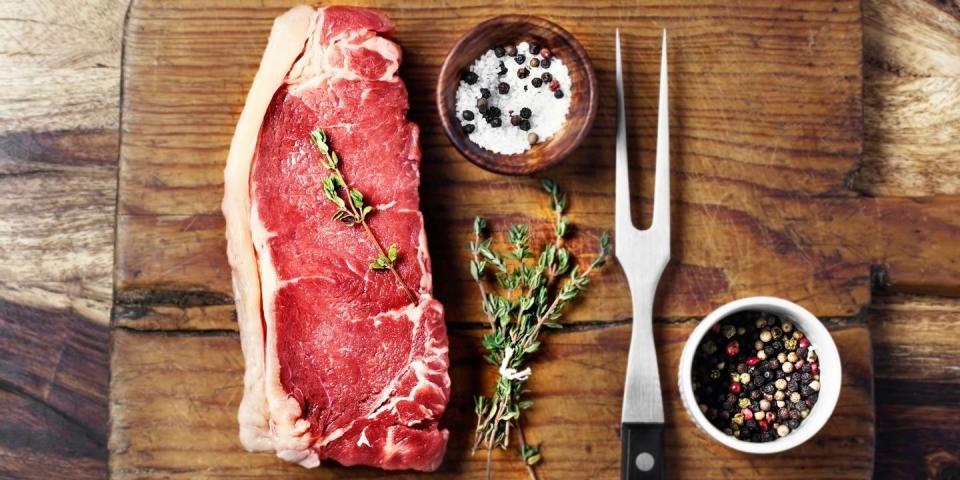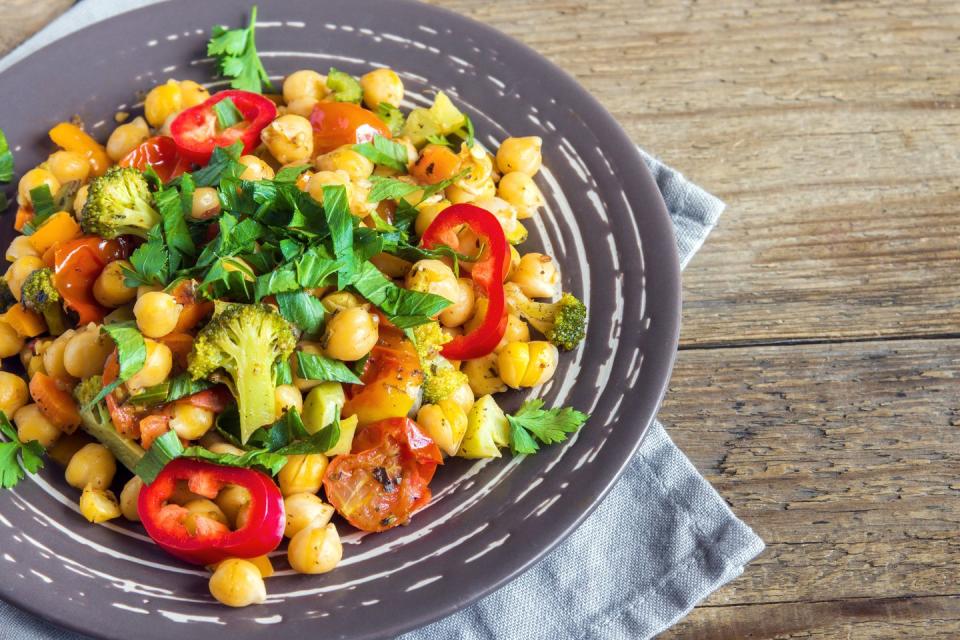7 common iron deficiency anaemia signs and symptoms

Tired, pale and generally exhausted? If you're feeling sluggish and you can't work out why, it's possible you might be deficient in iron. Iron deficiency anaemia is a common condition where a lack of iron leads to a reduction in the production of red blood cells. Since red blood cells help store and carry oxygen in the blood, if you have fewer red blood cells than normal, your organs and tissues won't get enough oxygen and your health may start to suffer.
We speak to Kajsa Ernestam, in-house dietitian at the global health app Lifesum, about iron deficiency symptoms, causes and how to ensure you hit your daily iron quota:
What is iron and why do we need it?
Iron is an essential mineral that can be found in a number of healthy foods. 'Your body needs it to make haemoglobin; a protein found in red blood cells that carries oxygen from your lungs to the rest of the body,' says Ernestam. 'Iron can also be found in myoglobin, which helps rebuild muscle tissue.'
'Iron comes in two main forms: heme and non-heme,' explains Ernestam. 'Plant-based foods, such as legumes, nuts, seeds, and wholegrains, contain non-heme iron only, whereas meat, seafood, and poultry contain both, making it easier to absorb. If you are on a plant-based diet, then make sure that you consume foods and drinks that are rich in Vitamin C, as it helps your body absorb non-heme iron.'

How much iron do you need?
The recommended daily intake of iron varies for women, men and children:
Teenagers and women: 14.8 milligrams of iron per day.
Men and women over 50: 8.7 milligrams of iron per day.
What is iron deficiency anaemia?
Most people get all the iron they need from the food they eat, but there are certain circumstances that can lead to iron deficiency anaemia.
'Low levels of iron lead to a reduction in the number of healthy red blood cells, which means that your body does not get enough oxygen, which can affect everything from your brain function, through to your immune system,' says Ernestam.
'The lack of red blood cells is called iron deficiency anaemia, and can cause dizziness, weakness, and fatigue.'
Who is at risk of iron deficiency anaemia?
Women who are pregnant or menstruating are more prone to iron deficiency anaemia. 'Menstruation depletes iron stores, which is why women have higher anaemia rates than men,' explains Ernestam.
'Pregnant women require much more iron than the recommended intake for women who aren't pregnant. Research by Harvard Medical School and Imperial College London found that a higher iron intake in pregnant women was associated with lower risks of maternal anaemia, as well as the reduction of low birth weight risks for the baby.'
'The exact recommended dosage will vary from woman to woman, which is why it’s important that you speak to your doctor before taking iron supplements,' she adds.
⚠️ Certain antibiotics and medications can be iron depleting. If you think that your medication is causing anaemia, then make sure to speak to your doctor, and do not stop taking the medication unless you are instructed to do so.
Iron deficiency anaemia symptoms
Look out for the following symptoms that may indicate you are have an iron deficiency:
1. Exhaustion
Iron is essential for moving oxygen around the body, so one of the first signs of iron deficiency is constant tiredness. Having normal iron levels is important for the the reduction of tiredness and fatigue.
2. Cold hands and feet
Cold extremities could be a sign of an iron deficiency as iron is needed by the body to generate heat.
3. Pale skin
Iron deficiency sees red blood cell levels decline which can result in a visibly paler complexion. If your face, toes, fingertips, inside of your lips, your gums, and the inside of your bottom eyelids are less red than usual, low iron may be to blame.
4. Brittle nails
Iron is necessary for healthy nail tissue growth. If you have noticed that your nails have ridges running down the length of them, or that they break or crack easily, it may be a sign that your iron levels are low.
5. Tongue troubles
If your tongue appears pale or smooth, it could be to lack of haemoglobin in the bloodstream which is a result of low iron levels
6. Shortness of breath
If you find that you are out of breath after climbing a flight of stairs or doing a low-key workout iron deficiency could be to blame.
7. Hair loss
Iron is one of the most important minerals for your hair and so if you find your barnet is looking lacklustre, or you lose hair, iron deficiency may be an underlying factor.
⚠️ Visit your GP if you experience iron deficiency anaemia symptoms. They should be able to diagnose the condition using a simple blood test and may prescribe iron supplements.
Should you take iron supplements?
You should be able to get all the iron you need from your diet, so always consult your doctor before taking supplements. 'If your doctor finds that you need more iron than your body is getting from your diet, then they might advise you to take iron supplements, which come in capsules,' says Ernestam.
'If the capsules cause you stomach pain then there are liquid forms of iron supplements available, and these can be found at Holland & Barrett or Boots,' advises Ernestam. 'For the best possible results, ensure that you take your supplement with foods or drinks that are high in Vitamin C, as this will make the absorption of iron easier.'
The best iron rich foods
There are a lot of healthy foods that contain iron. Ernestam recommends the following key foods to hit your daily iron quota and prevent iron deficiency:

Red meat
A 100 gram serving of ground beef contains roughly 2.7 milligrams of iron, which is 15 per cent of the daily recommended intake. Red meat is also high in protein, zinc, and Vitamin B. Red meat is the most easily accessible source of heme iron, and a recent study, published by Medline, found that people that consume red meat are less likely to suffer from an iron deficiency than those on a plant-based diet.

Legumes
The most common legumes are beans, lentils, peas, and chickpeas. These are a great source of iron for people that are on a plant-based diet. For example, roughly 200 grams of cooked lentils contain 37 per cent of the daily recommended intake.

Spinach
100 grams of spinach contain about 20 per cent of the recommended daily iron intake. While this is a non-heme iron, spinach is also rich in vitamin C, which helps the absorption of iron.

Pumpkin seeds
Pumpkin seeds are a perfect snack or topping for a salad. A 28 gram serving contains 23% of the daily recommended iron intake. In addition, pumpkin seeds are a good source of zinc, manganese, and vitamin K.
Last updated: 12-07-2021
You Might Also Like


